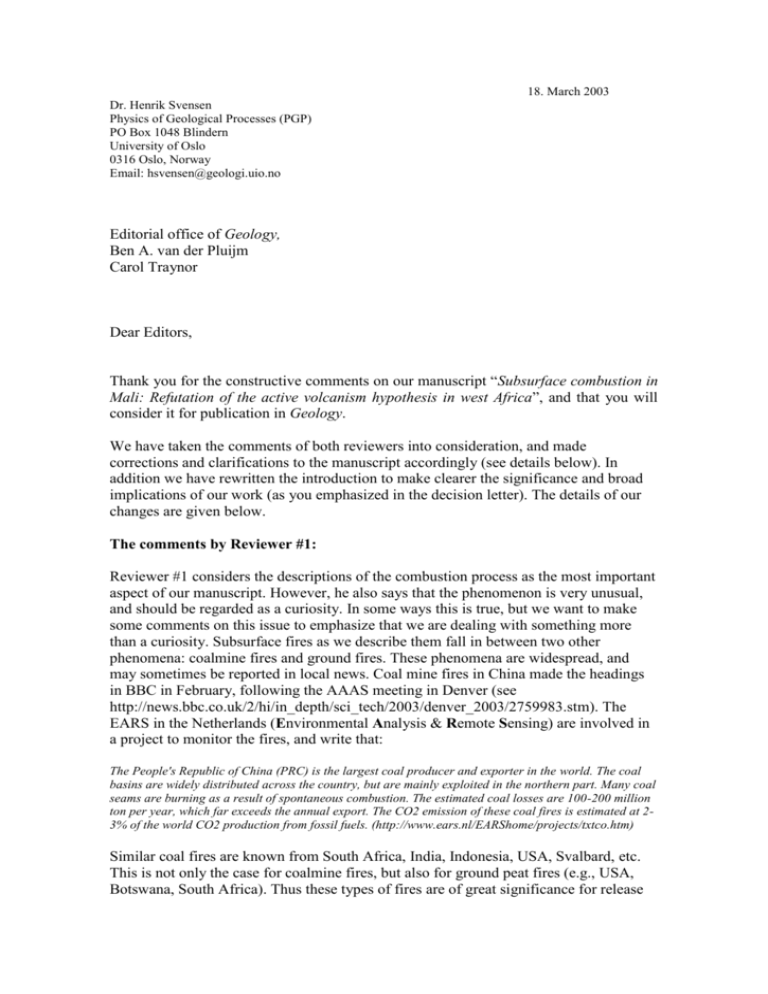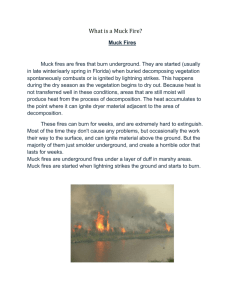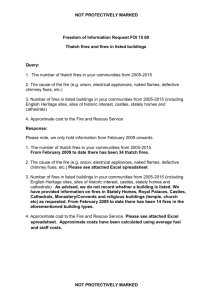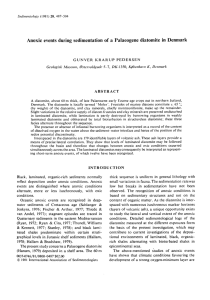Please consider the enclosed manuscript for publication in Geology
advertisement

18. March 2003 Dr. Henrik Svensen Physics of Geological Processes (PGP) PO Box 1048 Blindern University of Oslo 0316 Oslo, Norway Email: hsvensen@geologi.uio.no Editorial office of Geology, Ben A. van der Pluijm Carol Traynor Dear Editors, Thank you for the constructive comments on our manuscript “Subsurface combustion in Mali: Refutation of the active volcanism hypothesis in west Africa”, and that you will consider it for publication in Geology. We have taken the comments of both reviewers into consideration, and made corrections and clarifications to the manuscript accordingly (see details below). In addition we have rewritten the introduction to make clearer the significance and broad implications of our work (as you emphasized in the decision letter). The details of our changes are given below. The comments by Reviewer #1: Reviewer #1 considers the descriptions of the combustion process as the most important aspect of our manuscript. However, he also says that the phenomenon is very unusual, and should be regarded as a curiosity. In some ways this is true, but we want to make some comments on this issue to emphasize that we are dealing with something more than a curiosity. Subsurface fires as we describe them fall in between two other phenomena: coalmine fires and ground fires. These phenomena are widespread, and may sometimes be reported in local news. Coal mine fires in China made the headings in BBC in February, following the AAAS meeting in Denver (see http://news.bbc.co.uk/2/hi/in_depth/sci_tech/2003/denver_2003/2759983.stm). The EARS in the Netherlands (Environmental Analysis & Remote Sensing) are involved in a project to monitor the fires, and write that: The People's Republic of China (PRC) is the largest coal producer and exporter in the world. The coal basins are widely distributed across the country, but are mainly exploited in the northern part. Many coal seams are burning as a result of spontaneous combustion. The estimated coal losses are 100-200 million ton per year, which far exceeds the annual export. The CO2 emission of these coal fires is estimated at 23% of the world CO2 production from fossil fuels. (http://www.ears.nl/EARShome/projects/txtco.htm) Similar coal fires are known from South Africa, India, Indonesia, USA, Svalbard, etc. This is not only the case for coalmine fires, but also for ground peat fires (e.g., USA, Botswana, South Africa). Thus these types of fires are of great significance for release of CO2 to the atmosphere. However, studies of the initiation and evolution of these fires is almost non-existing in the geological literature. Furthermore, studies of the products of these types of fires in the geological record are lacking, which makes it almost impossible to address the importance of these types of fires throughout the geological history. We don’t solve all these important issues, but we claim that our data from Mali is a good starting point for focusing on the role of subsurface fires as a geological process. Specific comments: a) We have shortened the text several places, and moved the previous Figs. 2A, 2B, and 4 to a data repository. The length is now within the limits of four pages. We have also eliminated the gray shading in the figures. The figure fonts and other figure details are modified according to the comments by Eberle. b) The introduction has been rewritten, and is now more general and – we hope – more interesting for the general reader. c) All localities mentioned in the text are in the figures. d) We agree that our presentation of the “igneous daounites” was unclear. This has been corrected. We tried to find the dikes during fieldwork, but didn’t succeed. Thus we do not present any new data on the dikes but argue that the so-called daounites are produced by the subsurface fires. The arguments are, in short: i) The presence of nepheline in the dikes (Monod and Palausi, 1961) has not been confirmed by reanalysis of the original samples (El Abbass et al., 1993). ii) The high temperature minerals (cristobalite and mullite) are found in both “lava” and baked diatomite. iii) We have observed one of these high temperature minerals (mullite) in our samples of diatomite baked by subsurface fires. iv) The geometry of the “dike networks” as described (Monod and Palausi, 1961) is very similar to fracture networks and holes we observed that were produced by subsurface fires. v) The mixed contents of sand, “lava” and baked and unbaked diatomite (Monod and Palausi, 1961; Sauvage and Sauvage, 1992) suggests that the daounites are merely mixtures brought together in the fractures and holes by wind and annual floods and that have consolidated with time. e) Dashes versus hyphens have been corrected by Geology. f) To our knowledge, no heat flow data are available from our study area or nearby regions. We are not aware of any scientific boreholes in the area where these types of measurements could have been made. Furthermore, we believe that our conclusions are too strong to validate the initiation of a study aiming at measuring heat flow in the Lac Faguibine area. The reviewer also mentioned this. g) We have clarified the relationship between red diatomite and subsurface fires. The localities we have visited are all situated on old lake floor of the Lake Faguibine. The old lake floor is mostly covered by diatomite ooze. Thus the fires oxidize the cover diatomite ooze. Several samples collected from the trench we dug at the Haribibi locality have been studied by Prof. B. Stabell at the University of Oslo, which verified that the near-surface sediments are indeed diatomite ooze. The main diatom species is Aulacoseira granulata, which is a typical fresh water species. Comments by reviewer #2: Reviewer #2 has three main comments: 1) Reviewer #1 points out that The Smithsonian Institution catalogue of Active Volcanism hasn’t listed the studied region as active. We know that, but we don’t think that it really makes a big difference to our story. We document the phenomena that have been associated with possible incipient volcanism, and discuss all relevant literature arguing for incipient volcanism. 2) The Cameroon volcanic line is not mentioned in our manuscript. We are careful to place Mali and our study area in west Africa, which normally doesn’t include Cameroon. We don’t regard it as necessary to explicitly state that our study area differs from the geological setting in Cameroon. 3) We have rewritten the part of the discussion that mentions the dynamics of fire fronts, and included a reference to a study by reviewer #2 on the migration of volcanic fumaroles. We hope that our revised manuscript, including the data repository, will be found satisfactorily and suitable for publication in Geology without further reviews. A CD with all files (text, figures, and data repository), together with scannable copies of the figures, has been sent to Boulder by courier (on the 20th March). The text is written in Microsoft Word 2000, the figures are in CorelDraw 9.0 (and as EPS), and the data repository is made using Corel Ventura 10.0. Sincerely, Henrik Svensen





